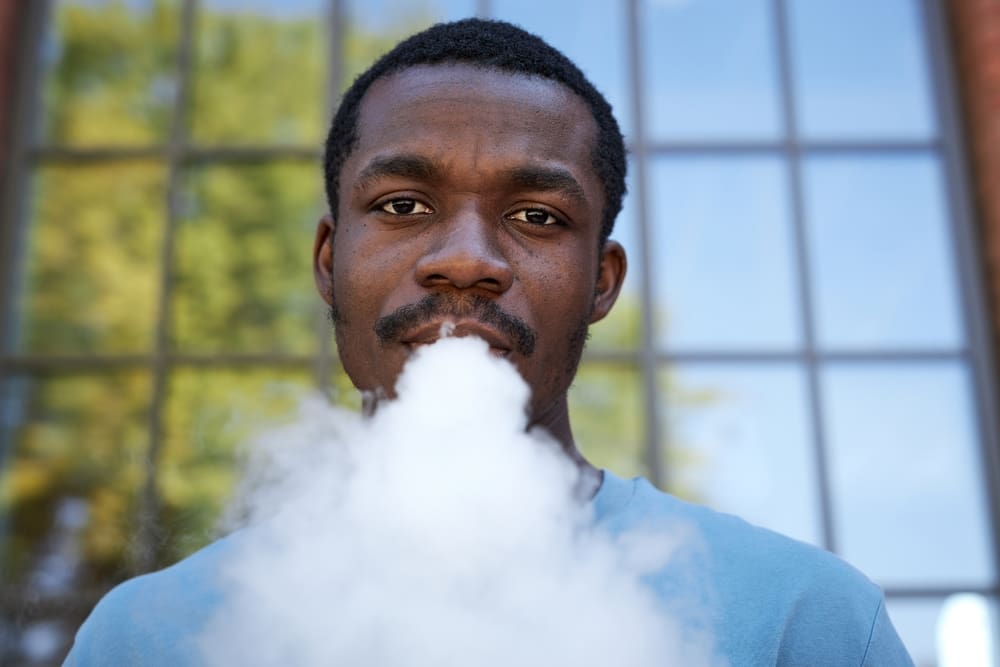Vaping has surged in popularity as an alternative to traditional smoking, often perceived as a safer option. However, mounting evidence suggests that this perception may not be entirely accurate, especially concerning lung health. This article delves into the reasons why vaping is increasingly linked to lung cancer, exploring scientific studies, the nature of inhaled substances, and expert opinions. The aim is to provide a comprehensive understanding of the risks associated with vaping, making it clear why it’s wise to consider these risks seriously.
Understanding Vaping and Its Components
What is Vaping?
Vaping involves inhaling an aerosol, commonly referred to as vapor, which is produced by an e-cigarette or similar device. These devices heat a liquid that usually contains nicotine, flavorings, and other chemicals. Unlike traditional cigarettes, there’s no combustion of tobacco, but the heated liquid creates an aerosol of ultrafine particles.
The Chemicals Involved
The liquid in vape devices, often called e-juice or vape juice, is a mix of several ingredients. While these typically include propylene glycol, vegetable glycerin, nicotine, and flavorings, the exact composition can vary widely. Some of these chemicals, when heated, transform into potentially harmful compounds, raising concerns about their safety.
The Evidence Linking Vaping to Lung Cancer
Scientific Studies and Research Findings
Numerous studies have investigated the effects of the aerosols generated by vaping on lung tissue. Research indicates that certain substances in vapor, like formaldehyde, acetaldehyde, and acrolein, are known carcinogens that can damage lung cells. Long-term exposure to these chemicals can potentially lead to mutations and cancer.
Comparisons with Traditional Smoking
While traditional cigarettes are well-known for their cancer-causing properties, e-cigarettes are sometimes marketed as a lower-risk option. However, experts caution that “lower risk” does not mean “safe.” In fact, some studies suggest that the type of nicotine delivery in vaping can also significantly affect lung health, similar to how tobacco does.
Testimonies and Expert Opinions
Healthcare Perspectives
Health professionals have increasingly voiced concerns regarding vaping. Pulmonologists and oncologists observe that patients who vape exhibit some of the same precancerous conditions seen in regular smokers. The medical community emphasizes the need for further research, given the surge in vaping among younger demographics.
Advocacy Groups and Regulatory Responses
Various health advocacy groups, including the American Lung Association, have been outspoken about the potential dangers of vaping. Regulatory bodies like the FDA are also scrutinizing the long-term health impacts, pushing for more stringent regulations on vape products.
Addressing Common Myths About Vaping
Myth: Vaping Is Completely Harmless
One common misconception is that vaping is harmless, especially compared to smoking. It’s crucial to challenge this myth by highlighting research that shows the potential health risks, including lung cancer.
Myth: Only Nicotine-Free Products Are Safe
Even nicotine-free vaping products contain harmful chemicals that can affect lung health. The process of heating these chemicals can create new toxic compounds, regardless of nicotine content.
Conclusion
The increasing body of scientific evidence pointing to a potential link between vaping and lung cancer serves as a stark reminder of the risks associated with this popular alternative to smoking. While vaping is often marketed as a safer option, the reality is that it may carry its own unique set of health risks, particularly concerning lung health. As research continues to unfold, it reveals a more nuanced understanding of how vaping affects our bodies, underscoring the importance of a cautious approach to its use.
For individuals considering vaping as a less harmful alternative to smoking, it is crucial to fully understand and seriously consider these emerging risks. Vaping is not without its dangers, and recognizing these can lead to more informed health decisions that prioritize long-term wellness over immediate gratification. The allure of vaping as a seemingly harmless activity needs to be balanced with the growing evidence that suggests otherwise.
As the landscape of vaping and its associated health effects continues to evolve, staying informed about the latest research findings is essential. Keeping abreast of new studies and regulatory changes can help individuals make better choices about vaping. Ultimately, maintaining a vigilant and informed stance will empower better decisions that protect and enhance health, ensuring that actions today do not compromise well-being tomorrow.
This story was created using AI technology.











4 Responses
I’ve vaped since 2008. I haven’t had any problems yet. My interest grew when I put an alarm system in a local e-juice manufacturing facility. I started on a vape pen, then eventually went to a regulated mod. I’ve been in cloud competitions. I’ve won free vaping juice in the past.
You’re an idiot u don’t feel it now but tou will in few years
I feel so much better after I quit vapeing was causing lots of breathing problems
Vaping is another addiction especially for our younger generation. You have these vape stores who sell to the underage and nothing is being done about it as well as we aren’t a big town and I swear we have a vape store on every street corner even close to our churches and schools. I’m working with an organization that us fighting to remove all flavored vapes because they are catering to the Younger generation as well as you have people driving smoking weed and harder drugs in these vapes. Where is our rights to not breathe the cloud they blow in the air as well as the elders would like to have cleaner lungs as well. Faith over Fear it will get done 🙏 🤲